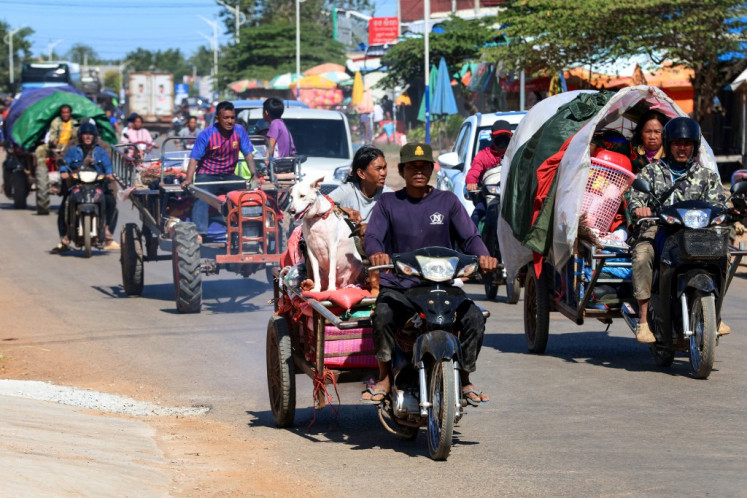Popular Reads
Top Results
Can't find what you're looking for?
View all search resultsPopular Reads
Top Results
Can't find what you're looking for?
View all search resultsGovt to revive more abandoned railway lines this year
The Transportation Ministry is planning to revive several defunct railroad lines this year in a bid to increase the number of passengers and supplies transported by train
Change text size
Gift Premium Articles
to Anyone
T
he Transportation Ministry is planning to revive several defunct railroad lines this year in a bid to increase the number of passengers and supplies transported by train.
The ministry's director general for railway affairs, Hermanto Dwiatmoko, said Tuesday the ministry had allocated some Rp 200 billion (US$17.6 million) to reactivate several railways.
These would include the 45-kilometer track from Cianjur to Padalarang (West Java), the 33-kilometer line from Surakarta to Wonogiri (Central Java), the 30-kilometer track from Kedungjati to Tuntang (Central Java) and the 9-kilometer line from Jakarta Kota to Tanjung Priok (Jakarta).
'Around 2,000 kilometers of railway, out of the existing 6,000 kilometers in the country, are not in operation. Not all of them can soon be activated because some of the tracks have been covered with residential areas,' Hermanto told reporters.
'As for other [abandoned] railway tracks, we are still evaluating the possibility of reviving them.'
In November 2013, the government reactivated the 57-kilometer Bogor-Sukabumi line in West Java, marked with the launching of the Pangrango train, in an effort to reduce traffic between the two cities.
The ministry also reopened the 38-kilometer Cianjur-Sukabumi track in West Java earlier this year.
In addition to reviving abandoned lines, the ministry is planning to lay more tracks to increase the nation's total to 12,100 kilometers by 2030.
Only 7 percent of the country's transportation users are rail passengers, whereas 85 percent use buses and vans.
By reviving the defunct lines, the ministry aims to increase the proportion of rail passengers to 13 percent. Meanwhile, logistics transportation by train will increase to 17 percent from 0.6 percent now.
'Rail tracks are only in Java and Sumatra, yet using trains would significantly reduce logistics costs,' said Elly Adriana Sinaga, the ministry's research and development agency director general.
'Our logistics still greatly rely on land infrastructure. We need to immediately formulate a strategic plan to develop our railroad network,' she said.
According to the ministry's data from 2011, Indonesia needed Rp 320 trillion in investment through 2025 to develop railways on the nation's five main islands: Sumatra, Java, Kalimantan, Sulawesi and Papua.
The ministry is also planning to break ground on a Makassar-Pare Pare railway line in South Sulawesi this year.
Additionally, the ministry is considering a plan to adopt Japan's Shinkansen high-speed rail to connect Jakarta and Bandung, a distance of 150 kilometers, in less than one hour.
'We are planning to begin the construction of the high-speed rail in 2016 and it will be ready to operate by 2020,' Hermanto said.










